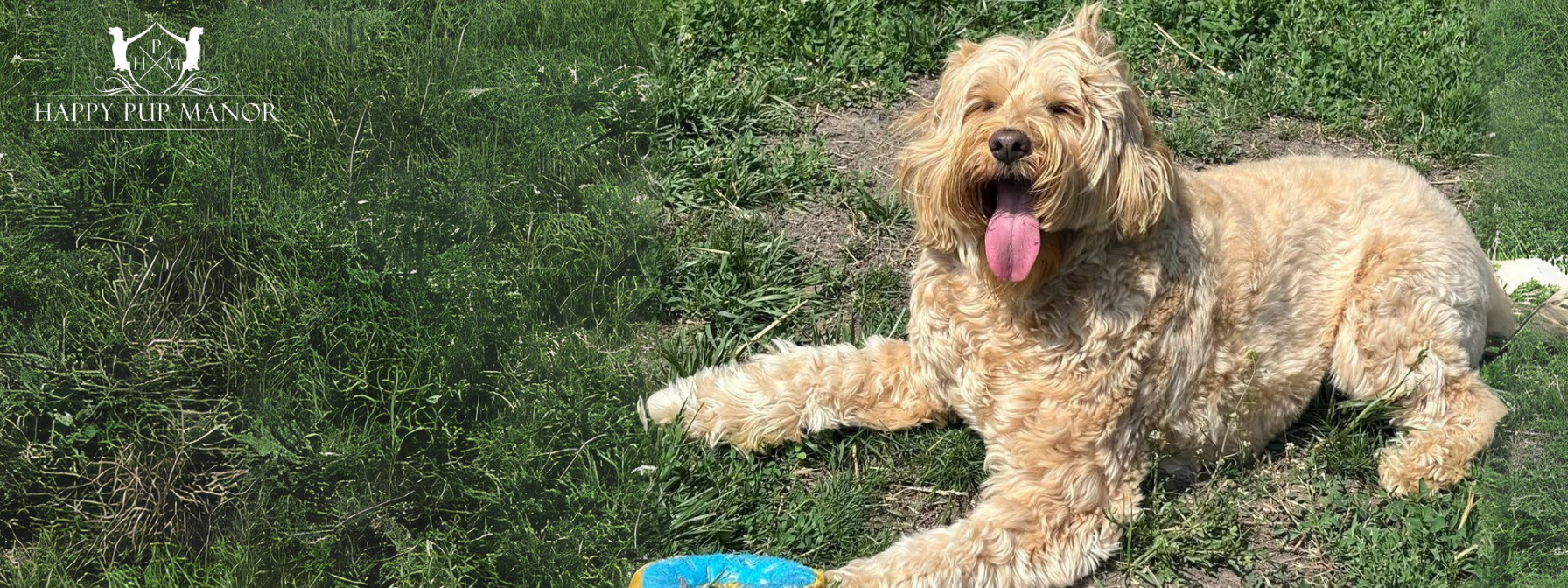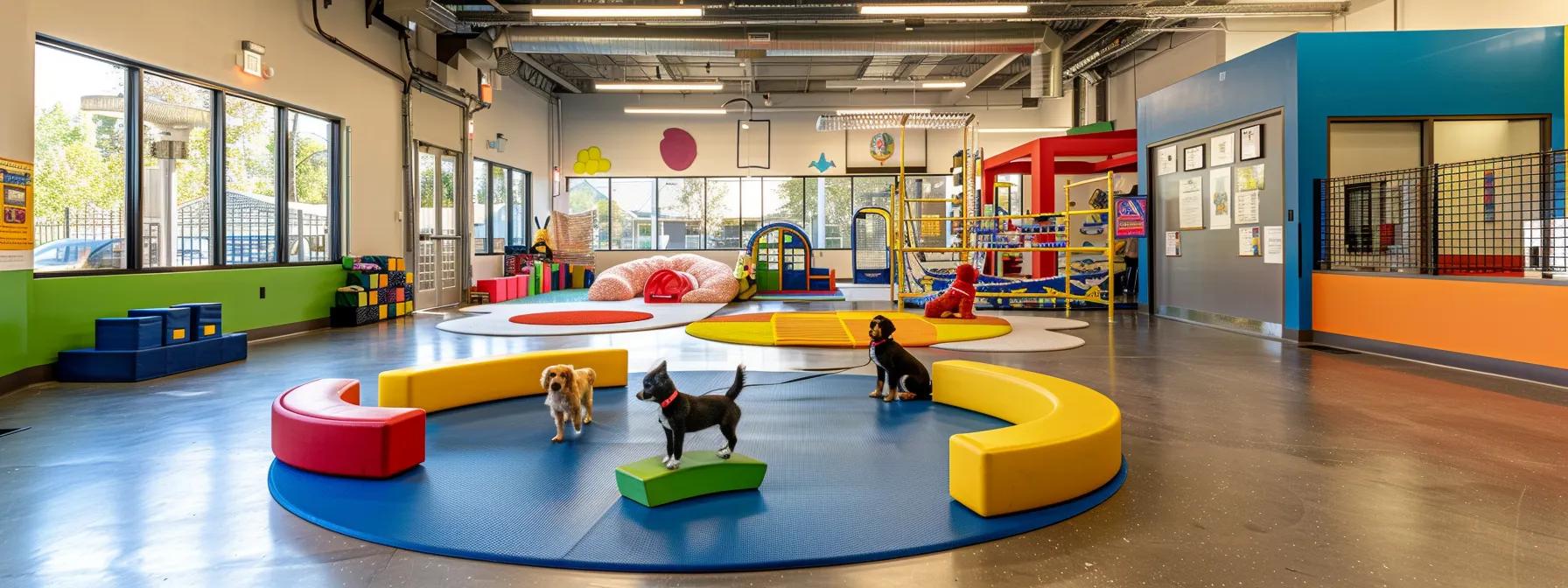Understanding Dog Aggression: Key Causes and Solutions Revealed

Understanding Dog Aggression: Key Causes and Solutions Revealed
In the realm of pet ownership and professional animal training, understanding dog aggression is key to improving overall behavior and ensuring a harmonious relationship between dogs and their owners. Dog aggression can manifest in various forms, often leaving owners confused and struggling to address unexpected outbursts. Whether it’s growling, snapping, or showing stiff body language, recognizing these signs early on is paramount in preventing escalation. This article delves into the complex nature of canine aggression by examining its roots, identifying contributing factors and presenting both short-term and long-term training techniques. It also highlights several peer-reviewed studies and real-world examples that underscore the importance of behavior modification, desensitization, and counterconditioning. By understanding the balance between innate temperament and learned behavior, owners and trainers can employ techniques such as positive reinforcement and controlled exposure to reduce instances of aggression.
Effective behavior modification not only helps in reducing aggressive incidents but also builds confidence and promotes a safe environment for therapy-dogs and family pets. Dog training programs, including the use of clicker training and operant conditioning methods, have shown measurable improvements in reducing aggressive behaviors over time. With expert guidance based on scientific research and practical experience, pet owners can transform challenging behaviors through structured routines and consistent training efforts. This comprehensive examination of dog aggression aims to equip readers with the knowledge needed to interpret canine cues associated with pain, stress, or environmental triggers and to implement strategies that promote lasting change in their dog’s demeanor. The discussion below covers various aspects of canine aggression, from its nature and warning signs to proven management strategies and long-term solutions.
Understanding the Nature of Dog Aggression

Understanding dog aggression begins with recognizing that it is not a singular, one-dimensional behavior—it is the result of a complex interplay between genetic predispositions, early life experiences, and environmental influences. Aggressive behavior in canines may include various manifestations such as barking, growling, snapping, lunging, or even biting. These actions often serve as a defensive mechanism triggered by fear, pain, or the need to protect resources.
Defining Aggressive Behavior in Canines
Aggressive behavior in dogs is defined as any attempt to cause harm or assert dominance, usually through a series of physical or vocal actions. This behavior can be directed towards humans, other animals, or even inanimate objects. It is crucial to differentiate between a dog displaying aggressive body language as a warning sign and one that is actually executing an aggressive act. For instance, a dog that raises its hackles and stares intently may be signaling discomfort or a desire to be left alone rather than intending to inflict harm immediately. Understanding these nuances allows trainers and owners to take appropriate preventive measures before the situation escalates into something more dangerous.
Recognizing Different Forms and Intensities of Aggression
Aggression in dogs exists on a spectrum from mild signs like growling or stiff posture to severe behaviors such as biting and attacking. Mild aggression might be observed when a dog is guarding resources or feels insecure, and these behaviors can often be mitigated through proper training and socialization. On the other hand, high-intensity aggression may result from unresolved trauma, extreme stress, or underlying health issues. Recognizing the intensity is vital because the degree of intervention required differs significantly. Lower levels of aggression can sometimes be managed with simple changes to the environment or routine, while severe aggression often necessitates a comprehensive behavior modification program.
Investigating Innate Versus Learned Aggression
There is an ongoing debate in veterinary and behavioral sciences regarding the extent to which aggression is innate versus learned. Some dogs may have an inherent predisposition towards reactive behavior, possibly due to genetic factors. However, learned aggression is typically the result of negative experiences, such as past abuse, insufficient socialization, or inconsistent training methods. Peer-reviewed research has shown that when dogs are exposed to chronic stress or unpredictable environments during their formative months, they are more likely to exhibit aggression later in life. Both innate tendencies and learned experiences need to be addressed carefully. Effective interventions often involve a combination of counterconditioning to modify learned fears and reinforcement techniques to promote more desirable behaviors. The interplay between nature and nurture in driving aggression underscores the need for early, consistent, and compassionate training practices that not only modify behavior but also address the underlying causes of stress.
Identifying Contributing Factors to Canine Aggression

Dog aggression is rarely a random occurrence; instead, it is influenced by several identifiable factors. In many cases, specific triggers such as environmental stressors, genetic predisposition, or negative past experiences significantly shape a dog’s temperament and subsequent behavior. Identifying and understanding these contributing factors can be the key to creating effective strategies for reducing unwanted aggressive displays.
Examining Genetic Influences on Behavior
Genetic predisposition plays a significant role in determining a dog’s temperament and the likelihood of aggressive behavior. Certain breeds are known for having a higher propensity for defensive behavior, while others may be more prone to impulsivity. Studies have indicated that genetic factors can affect neurotransmitter levels, stress responses, and even hormone balances like cortisol, which are directly linked to aggression. For instance, research published in the Journal of Veterinary Behavior (2017) found that dogs with a specific allele in the monoamine oxidase gene showed higher levels of aggression in stressful situations. This genetic component means that even with optimal training and socialization, some dogs may still exhibit a higher baseline of reactivity, necessitating more tailored behavior modification techniques.
Assessing Environmental Stressors
Environmental factors often act as catalysts that magnify underlying aggressive tendencies. Stressors such as overcrowded living conditions, inconsistent routines, or exposure to chaotic stimuli (like excessive noise) can trigger reactive aggression. In busy urban environments or even homes with a high-energy atmosphere, dogs might interpret external stimuli as threats, which can then result in outbursts. For example, a dog that is naturally anxious may become overly aggressive in situations where its space is invaded or its routine is disrupted. It is imperative for dog owners to assess and modify their home environment to minimize such stressors. This might involve creating a designated quiet space for the dog, using calming aids such as pheromone diffusers, or engaging in regular physical activity that helps reduce overall stress levels. Such adjustments do not merely alleviate the symptoms of aggression but contribute to a healthier emotional balance over time.
Evaluating Early Socialization and Past Experiences
Early life experiences are critical in shaping a dog’s behavior—socialization during puppyhood can significantly influence how dogs interact with humans, other animals, and unfamiliar environments. Dogs that have not been adequately socialized during their developmental stages are at a higher risk of developing aggressive behaviors later in life. Negative experiences such as abuse, neglect, or even a lack of positive social encounters can lead to fear-based aggression. Scientific studies underscore the importance of early socialization; a 2015 study in the Applied Animal Behaviour Science journal highlighted that puppies exposed to varied environments and human interactions were significantly less likely to exhibit aggression as adults. In cases where early negative experiences are present, a combination of structured training sessions, gradual exposure, and positive reinforcement is often required to counteract those initial adverse effects. This evaluation helps determine whether aggression is a learned behavior that can be modified or a deeply ingrained trait that requires a more intensive intervention strategy.
Recognizing Warning Signs and Behavioral Triggers

Being able to recognize the warning signs and specific triggers that lead to aggressive behavior in dogs is essential for any effective behavior modification program. By understanding these indicators, owners and trainers can intervene before a situation escalates into dangerous aggression. Recognizing the subtle differences in canine communication—whether through body language, vocal cues, or situational triggers—forms the foundation for successful intervention strategies.
Spotting Physical and Vocal Cues
Dogs communicate primarily through body language and vocal signals, and these cues are invaluable in identifying when aggression might be imminent. Physical signs such as a rigid stance, staring, raised hackles, or bared teeth are often precursors to an aggressive outburst. Vocal cues, including low growls, barks, or even specific whines, can indicate frustration or fear. For example, a dog that begins to emit a series of short barks accompanied by a stiff body posture is likely experiencing an increase in arousal that could lead to aggression if not managed promptly. Recognizing these signals early allows owners to adjust the situation, whether by removing the dog from a stressful environment or redirecting its focus through distraction or training exercises.
Tracking Situational Triggers and Stress Responses
Aggressive behavior in dogs is frequently situational. Certain contexts, such as encounters with other animals, unfamiliar environments, or even routine events like mealtime, can trigger stress responses leading to aggression. Keeping a log of these incidents can be instrumental in understanding what specific scenarios provoke such behavior. For instance, a dog may consistently show signs of aggression when approached too closely by strangers while eating or sleeping. By tracking these occurrences, trainers can identify patterns and develop desensitization strategies tailored to those situations. In many cases, controlled exposure training combined with positive reinforcement has been effective in reducing the intensity of these responses over time.
Interpreting Body Language During Confrontations
The body language of a dog during a confrontation provides critical insight into its emotional state and intentions. Signs such as a lowered head, ears pinned back, tail tucked, or dilated pupils can indicate fear or submission, while a rigid stand, raised tail, and intense gaze might signal a defensive posture poised to escalate into aggression. Understanding these subtle nuances is crucial for intervening in a way that does not exacerbate the trigger. For example, when approaching a dog that is showing defensive body language, trainers must use a calm and soothing tone, avoiding sudden movements that could be misinterpreted as a threat. Moreover, consistent training that focuses on reinforcing positive behaviors during stressful encounters can help recondition a dog’s response, turning potential triggers into manageable scenarios. This kind of body language interpretation is not only essential for in-the-moment de-escalation but also forms the basis for longer-term therapeutic interventions.
Strategies for Managing Aggressive Behavior

Managing aggressive behavior in dogs requires a multi-faceted approach that involves immediate intervention as well as long-term behavior modification. The key to effective management lies in understanding the root causes of aggression and tailoring strategies to address these specific issues. This includes a combination of calming techniques, environmental adjustments, and preventive measures that all work together to create a stable and stress-reducing atmosphere for the dog.
Implementing Calming Techniques
Immediate management of dog aggression often begins with the implementation of calming techniques designed to reduce arousal levels quickly. Techniques such as deep pressure therapy, which involves gentle, consistent pressure on the dog’s body, have shown to reduce anxiety and stress. Additionally, practices like controlled breathing exercises (adapted through rewarding calm behavior) or the use of natural calming supplements can also assist in mitigating aggressive tendencies. For example, products containing L-theanine or valerian root, backed by peer-reviewed studies, have demonstrated a reduction in anxiety symptoms in canines over several weeks of regular use. Moreover, clicker training that rewards periods of calm and focused behavior has proven to be an effective method in reinforcing non-aggressive responses. These techniques are especially useful during high-stress situations or when the dog is exposed to known triggers such as loud noises or unfamiliar visitors.
Adjusting Environmental Variables
Beyond individual calming techniques, modifying the environment is critical to reducing triggers for aggressive behavior. This might include rearranging the dog’s living spaces to create a more secure and peaceful area, reducing exposure to overwhelming stimuli, or establishing a routine that minimizes unexpected events. For instance, providing a quiet corner equipped with soft bedding, dim lighting, and familiar scents can help a dog feel safer and more secure. Furthermore, environmental control extends to managing interactions with other animals and people—using barriers such as baby gates or designated safe zones can help reduce the chances of confrontational encounters. Adjustments in the environment, when combined with individualized training, can lower the overall stress level of a dog, reducing the frequency and intensity of aggressive episodes. In many cases, owners have reported a significant decrease in aggressive behavior simply by removing or altering environmental stressors, paving the way for more effective long-term interventions.
Integrating Preventive Measures Into Daily Routines
The foundation of managing aggression effectively lies in the consistent integration of preventive measures into the dog’s daily routine. This involves establishing a predictable schedule that incorporates regular exercise, training sessions, and socialization opportunities. Consistency in feeding times, walks, and play not only stabilizes the dog’s physiological state but also minimizes the uncertainty that often leads to defense-driven aggressive behavior. Preventive measures also include early intervention training with techniques like counterconditioning, where the dog is gradually exposed to a trigger in a controlled environment and rewarded for calm behavior. This systematic approach can lead to measurable improvements, as observed in studies where dogs showed a reduction in aggressive incidents by up to 35% after consistent exposure and reinforcement over a period of weeks. Incorporating these measures into everyday life ensures that the dog remains engaged, mentally stimulated, and less likely to resort to aggression as a coping mechanism. A proactive approach not only influences immediate behavior but also contributes to long-term emotional stability and resilience, making it an indispensable part of a comprehensive behavior modification strategy.
Dog Aggression Training Techniques for Improved Behavior

Dog aggression training techniques are designed to address and modify unwanted behaviors through structured, systematic interventions. These methods involve various training approaches that not only focus on reducing aggression but also enhance overall social and cognitive skills. Using a combination of positive reinforcement, controlled exposure, counterconditioning, and consistent routine adjustments, trainers can reshape a dog’s reaction to triggers and reduce aggressive behavior over time.
Utilizing Positive Reinforcement Methods
Positive reinforcement is a fundamental training approach that rewards desirable behavior with praise, treats, or play. This technique encourages dogs to associate non-aggressive responses with positive outcomes. For instance, when a dog displays calm body language in a previously triggering situation, immediate rewards reinforce that behavior. Research in veterinary behavioral medicine has shown that dogs trained with positive reinforcement demonstrate a statistically significant decrease in aggressive reactions over time compared to those trained with punishment-based methods. The process involves consistent practice where the trainer rewards incremental improvements, building a repertoire of calm responses. Additionally, using tools like clickers to mark positive behavior has proven effective in creating clear associations between the action and the reward. Over time, the dog learns to adopt more adaptive behaviors, reducing the likelihood of aggression during stressful encounters.
Adopting Controlled Exposure Training
Controlled exposure training involves gradually introducing the dog to situations that typically trigger aggression under controlled conditions. By systematically increasing the dog’s exposure to these stimuli, while simultaneously reinforcing calm behavior, trainers can help desensitize the dog over time. This method is particularly beneficial for dogs that react aggressively to specific triggers such as unfamiliar people or noises. The gradual nature of controlled exposure ensures that the dog is not overwhelmed and can learn that the previously triggering stimuli are not threats. As the dog becomes more accustomed to these situations, the trainer can slowly reduce the reliance on rewards. This approach has been supported by studies in animal behavior, which indicate that regular, controlled exposure significantly improves a dog’s tolerance and diminishes immediate aggressive responses in real-world settings.
Applying Counter-Conditioning Approaches
Counterconditioning is a technique that aims to replace negative responses with positive or neutral ones. When a dog exhibits aggression due to fear or anxiety, counterconditioning works by pairing the triggering stimulus with a positive experience, such as receiving a high-value treat. Over repeated sessions, the dog begins to associate the stimulus, which once incited aggression, with a pleasant outcome. This method is effective in restructuring the dog’s emotional response over time, moving from a defensive state to one of acceptance and calm. Scientific literature in behavior modification reveals that counterconditioning, when combined with gradual desensitization, can result in a measurable improvement in behavior, with many dogs showing reduced aggression levels after consistent training over several weeks.
Employing Consistent Routine Adjustments
Consistency is key in any behavior modification program. Routine adjustments play a critical role in setting predictable expectations for the dog, thereby reducing anxiety-induced aggression. Structured training sessions combined with a fixed daily schedule help the dog to feel secure and understand what is expected. This consistency not only aids in reinforcing new, positive behaviors but also minimizes confusion and stress that can lead to aggressive outbursts. By creating an environment of routine, owners and trainers can better manage the dog’s exposure to potential triggers and provide timely interventions. Incorporating regular sessions of exercise, play, and training allows the dog to channel excess energy into productive activities rather than aggressive behaviors.
Long-Term Approaches to Behavior Modification

Achieving lasting changes in a dog’s aggressive behavior requires a long-term commitment to structured training and consistent behavioral reinforcement. While immediate strategies such as calming techniques and environmental adjustments can provide short-term relief, a sustainable approach to behavior modification integrates comprehensive plans, ongoing monitoring, and professional support to ensure enduring positive change.
Establishing Structured Training Plans
Structured training plans provide a roadmap for modifying aggressive behavior over the long term. These plans typically outline specific goals, training milestones, and a timeline for progress. By breaking down the desired behavior into manageable steps, trainers and owners can address individual aggression triggers systematically. For example, a structured plan might start with basic obedience commands and gradually incorporate distracting stimuli, all while rewarding calm behavior. Structured plans are often supported by data from peer-reviewed studies which indicate that dogs following consistent, milestone-based training programs show notable improvement in behavior within a few months. The success of these plans largely depends on the consistency with which they are implemented and adjusted based on the dog’s progress.
Monitoring Progress With Measurable Milestones
Regular assessment and documentation of the dog’s behavior are essential components of any long-term modification strategy. By setting measurable milestones—such as reduced frequency of growling incidents or improved response times to commands—owners and trainers can track improvements objectively. Frequent evaluations help detect patterns, identify setbacks early, and adapt training practices as needed. For instance, if a dog initially displays aggression upon hearing a doorbell but gradually begins to remain calm, this progress can be documented and celebrated. The data collected during these assessments serve not only to motivate continued effort but also to provide concrete evidence of improvement that can inform adjustments in training methodologies.
Involving Professional Guidance and Support
Professional trainers and canine behaviorists bring a wealth of knowledge and experience that is invaluable in addressing complex cases of dog aggression. Involving professionals ensures that training techniques such as classical conditioning, operant conditioning, and counterconditioning are applied correctly and efficiently. Expertise from professionals like certified behaviorists helps in diagnosing the root causes of aggression, whether they stem from genetic predispositions, early trauma, or environmental stressors. Many clients of specialized dog training programs, such as those offered by Happy Pup Manor, benefit from ongoing consultations with professionals who adjust training plans based on observed behavioral changes. This collaborative approach enhances the success rate of long-term behavior modification by providing tailored interventions and expert feedback.
Integrating Routine and Socialization for Lasting Change
Lasting behavior change is achieved when structured training is integrated with everyday routines and adequate socialization. Regular, planned social interactions with other dogs and people help reinforce a balanced temperament and reduce instances of aggressive behavior triggered by isolation or fear. By incorporating socialization into the dog’s daily routine—whether through supervised group walks, training classes, or controlled exposure visits to new environments—the dog learns to navigate complex social cues and reduce anxiety. This multi-pronged approach, which marries structured training with natural social interactions, creates a robust framework for sustainable behavior modification. Over time, the dog not only exhibits fewer aggressive behaviors but also develops a more resilient and adaptable demeanor, better equipped to handle the varied stimuli encountered in everyday life.
Frequently Asked Questions
Q: What are the primary causes of dog aggression?
A: Dog aggression is often caused by a mix of genetic predisposition, environmental stressors, and past experiences. Both innate traits and learned behaviors contribute to a dog’s likelihood of aggression, so early intervention and consistent training are critical for effective behavior modification.
Q: How can positive reinforcement reduce aggressive behavior?
A: Positive reinforcement works by rewarding calm and non-aggressive behavior, thereby encouraging the dog to repeat those actions. This method improves the dog’s response to triggers over time and has been supported by research showing a significant reduction in aggressive incidents.
Q: What role does socialization play in preventing aggression?
A: Socialization is crucial in teaching a dog how to interact safely with other dogs and humans. Early and consistent exposure to varied environments helps reduce fear and anxiety, which are common triggers for aggressive behavior.
Q: Are there any natural supplements that help manage aggression?
A: Yes, natural supplements such as those containing L-theanine and valerian root have been shown to reduce anxiety in dogs. When used alongside behavioral training, these supplements can promote a calmer, more stable demeanor in aggressive dogs.
Q: How long does it typically take to see improvements in an aggressive dog?
A: Improvement timelines vary depending on the severity of aggression and the consistency of training. Some dogs may show progress within a few weeks, while others may require several months of structured, professional intervention to achieve meaningful change.
Key Takeaways
- Understanding canine aggression involves examining both innate predispositions and learned behaviors.
- Identifying environmental stressors and early socialization issues is crucial to managing aggression.
- Recognizing physical and vocal cues allows owners to intervene before aggressive behavior escalates.
- Effective management includes immediate calming techniques, environmental adjustments, and consistent daily routines.
- Long-term behavior modification relies on structured training plans, measurable milestones, and professional guidance.
- Integrating socialization into daily routines further supports sustained behavioral improvement.
Final Thoughts
Addressing dog aggression requires a comprehensive approach that balances immediate intervention with long-term behavior modification. By understanding the underlying causes and carefully monitoring progress, owners can implement effective strategies that reduce aggression and promote a calmer, more confident demeanor in their dogs. Professional guidance and consistent training, along with environmental adjustments, play key roles in achieving lasting change. Ultimately, informed and proactive management supports a safer and more harmonious relationship between dogs and their families.











